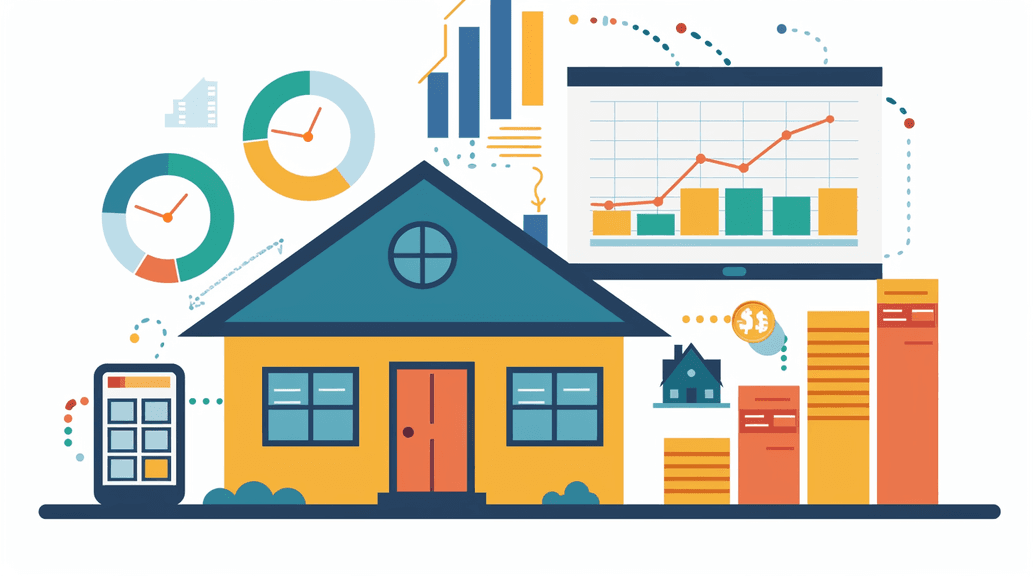Loan-to-Value (LTV) Ratio: Everything You Need to Know

The first step toward getting a dream home is usually obtaining a mortgage loan. However, before diving into the world of interest rates and loan terms, it is important to understand the key concepts that directly impact your mortgage eligibility and the conditions you can expect. One of the most crucial of these concepts is the Loan-to-Value Ratio (LTV).
At first glance, it may seem like just another overly complex financial term, but in reality, LTV is simply a tool that helps banks assess the risks associated with lending. You, for your part, can use it to determine how favorable the mortgage offer is.
In this article, we will explain what LTV is, how this ratio is calculated, and why it is so crucial for both lenders and borrowers.
What Is Loan-to-Value Ratio?

So, what does LTV mean? On the basic level, it indicates the relationship between the loan amount and the value of the asset purchased. This ratio is most frequently used to issue a home ownership loan. In most banks, its maximum possible level is 70–80% of the pledged property’s cost. The higher the LTV ratio, the more risks the loan creates for the lender.
Similarly, a low LTV reduces the risk taken by lenders because they get a more secure collateral. Let’s say you borrow $50,000, and the value of the house you’re buying is $100,000. The LTV, in this case, is 50%. This shows how much of the value of the collateral covers your loan.
How to Calculate the Loan-to-Value Ratio

Now we get Loan to Value explained, let’s see how it’s calculated. The formula is surprisingly simple. You just need to divide your credit sum by the purchase price and multiply it by 100%. So, the Loan to Value formula looks like this:
(Lto Size / Purchase Price) * 100% = LTV
The Loan-to-Value Ratio is always presented as a percentage. Therefore, if the calculation gives 0.60, the LTV is 60%.
Imagine you want to buy an apartment appraised at $500,000, but the owner agrees to sell it for $400,000. With a $40,000 first installment, the loan amount is $360,000, resulting in an LTV ratio of 90%.
Why Is LTV Important?

Risk Assessment
LTV is a key determinant of the lender’s risk level. A lender providing loans with a higher LTV runs a larger risk of losing money. LTV assessment enables lenders to mitigate risks with appropriate loan terms, including interest rates, down payment conditions, and the prospect of mortgage insurance. Still, appropriate risk assessment requires a company to consider several factors, including the economic environment, the client’s credit rating, etc., and any single formula will ever be only a part of that larger whole.
Thus, LTV analysis helps lenders make better lending choices to minimize potential losses and ensure the stability of their operations.
Mortgage Insurance
Generally, clients who have low LTVs typically have additional benefits, such as:
- Be eligible for decreased interest rates;
- Eliminating insurance contributions on private mortgages;
- Greater chance of being approved for the underwriting of a home mortgage loan.
Even half a percent lower interest can have a significant impact on your finances. In perspective, a 0.5% reduction can save you thousands of dollars throughout the loan term.
Maintaining the loan-to-value ratio at 80% or lower, usually with a large down payment, has significant advantages. Homeowners with an 80% LTV don’t require private mortgage insurance. Moreover, they frequently qualify for better borrowing rates.
Equity
Equity is part of the value of an asset (e.g., real estate) that is paid for by the borrower’s own funds when purchasing or refinancing. It directly affects LTV. The higher the equity, the lower the LTV.
In general, a lender views greater equity as more favorable because a borrower contributes a larger share of an asset’s value. In addition, it can mean reduced interest rates and improved loan conditions for the borrower.
Minimum equity requirements may vary depending on the circumstances. For instance, many mortgage lending programs may demand an equity contribution from the prospective owner in the amount of 20% of the home’s worth when they buy the property. If the equity isn’t high enough to reach a particular LTV limit, you could need mortgage insurance to safeguard your interests as a lender.
LTV Limits Explained

Conventional Mortgage
A conventional mortgage is a type of home loan offered by private lenders, such as banks, credit unions, and mortgage companies. Unlike FHA loans, conventional loans typically require a lender to have a good credit score and are not backed by a government entity. However, some conventional mortgages can be guaranteed by two government-sponsored enterprises: the Federal Home Loan Mortgage Corp. (Freddie Mac) and the Federal National Mortgage Association (Fannie Mae). Also, note that borrowers who want to forego paying private mortgage insurance should have a maximum Loan-to-Value of 80%.
If you meet the strict requirements for a conventional mortgage, it can be a cost-effective way to finance the purchase of a home. For instance, if you were to buy a $500,000 home with a $100,000 down payment (20% of the purchase price) and had a credit score of 650, you might qualify for a conventional mortgage with a fixed interest rate of 5.50%. This would result in a monthly principal and interest payment of approximately $2,271 over a 30-year loan term.
FHA Loans
Homebuyers can apply for FHA loans through the Federal Housing Administration. The main goal of this organization is to assist borrowers who would struggle to put down a deposit on a conventional loan. The maximum allowable Loan-to-Value for FHA loans is 96.5%.
Bear in mind that making higher down payments won’t save you any money because all FHA loans demand borrowers to get mortgage insurance as part of the credit program.
Private Mortgage Insurance
Private mortgage insurance (PMI) protects the lender if the borrower cannot repay the loan and the debt is not cleared. A lender may insist a borrower buy this insurance if the LTV is high. PMI usually covers the difference between the property’s appraised worth and the current mortgage debt. It allows lenders to safeguard themselves against any losses in the event of a borrower’s default. As a result, private mortgage insurance may be unavoidable for borrowers with high LTVs, as otherwise, most lenders would refuse to provide such a high-risk loan.
Final Thought
LTV is used in most mortgages, so understanding the math behind this metric is important for anyone dealing with real estate. If you know your LTV, you can predict what kind of loan you can claim. You may save money on PMI and have more alternatives for refinancing later by maintaining a low LTV ratio. That’s why we suggest you calculate the Loan to Value Ratio before applying for a mortgage.




